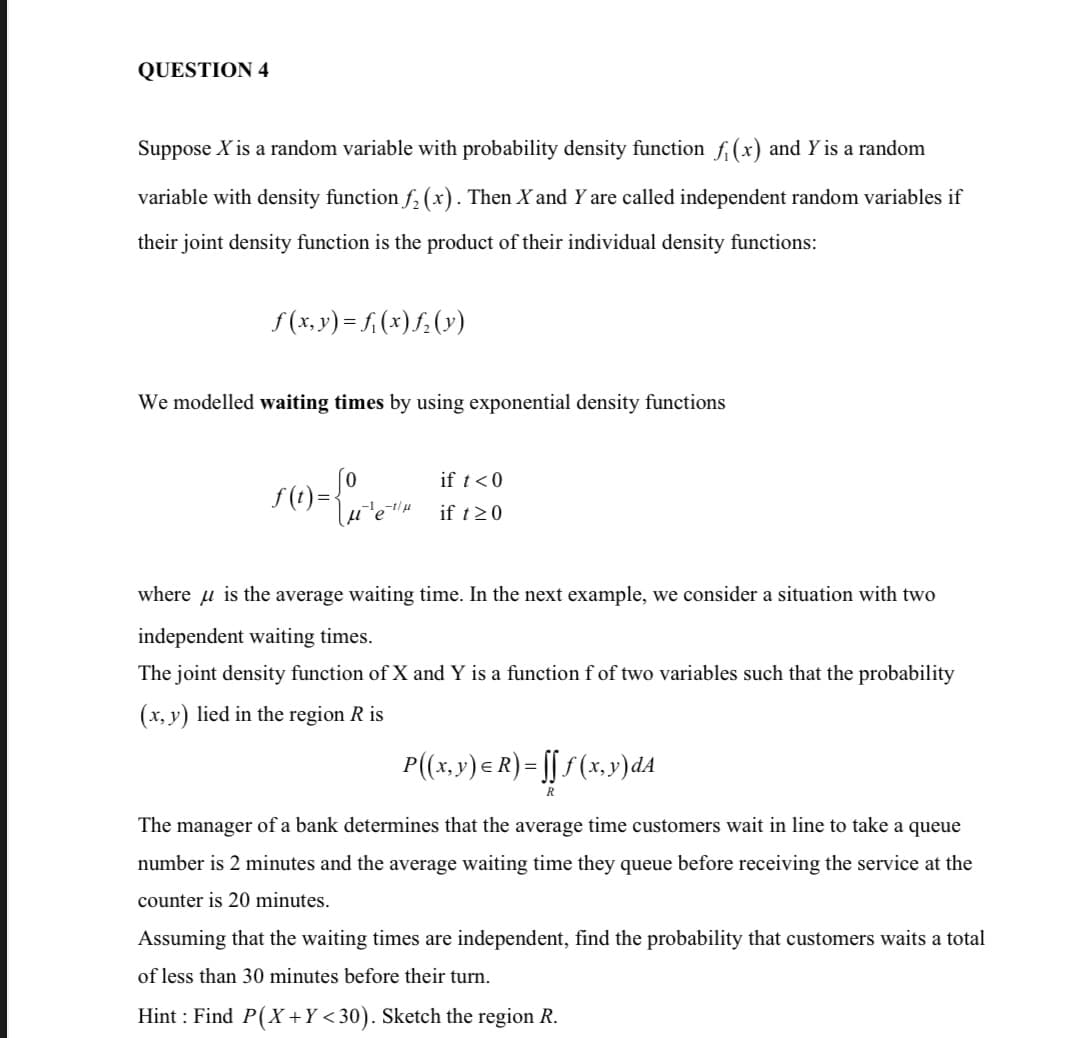Linear Algebra: A Modern Introduction
4th Edition
ISBN:9781285463247
Author:David Poole
Publisher:David Poole
Chapter7: Distance And Approximation
Section7.3: Least Squares Approximation
Problem 32EQ
Related questions
Question

Transcribed Image Text:QUESTION 4
Suppose X is a random variable with probability density function ƒ₁ (x) and Y is a random
variable with density function ƒ₂ (x). Then X and Y are called independent random variables if
their joint density function is the product of their individual density functions:
ƒ(x, y) = f(x)ƒ₂ (y)
We modelled waiting times by using exponential density functions
if t < 0
ƒ(1)={u²³e-4₂
f(t)
if t≥0
where is the average waiting time. In the next example, we consider a situation with two
independent waiting times.
The joint density function of X and Y is a function f of two variables such that the probability
(x, y) lied in the region R is
P((x, y) = R) = ſ[ƒ (x,y) dA
[[
R
The manager of a bank determines that the average time customers wait in line to take a queue
number is 2 minutes and the average waiting time they queue before receiving the service at the
counter is 20 minutes.
Assuming that the waiting times are independent, find the probability that customers waits a total
of less than 30 minutes before their turn.
Hint: Find P(X+Y<30). Sketch the region R.
Expert Solution
This question has been solved!
Explore an expertly crafted, step-by-step solution for a thorough understanding of key concepts.
Step by step
Solved in 2 steps with 2 images

Recommended textbooks for you

Linear Algebra: A Modern Introduction
Algebra
ISBN:
9781285463247
Author:
David Poole
Publisher:
Cengage Learning

Linear Algebra: A Modern Introduction
Algebra
ISBN:
9781285463247
Author:
David Poole
Publisher:
Cengage Learning